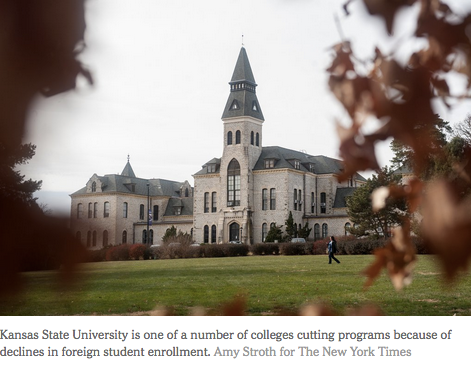Just as many universities believed that the financial wreckage left by the 2008 recession was behind them, campuses across the country have been forced to make new rounds of cuts, this time brought on, in large part, by a loss of international students.
Schools in the Midwest have been particularly hard hit — many of them non-flagship public universities that had come to rely heavily on tuition from foreign students, who generally pay more than in-state students.
The downturn follows a decade of explosive growth in foreign student enrollment, which now tops 1 million at United States colleges and educational training programs, and supplies $39 billion in revenue. International enrollment began to flatten in 2016, partly because of changing conditions abroad and the increasing lure of schools in Canada, Australia and other English-speaking countries.
And since President Trump was elected, college administrators say, his rhetoric and more restrictive views on immigration have made the United States even less attractive to international students. The Trump administration is more closely scrutinizing visa applications, indefinitely banning travel from some countries and making it harder for foreign students to remain in the United States after graduation.
While government officials describe these as necessary national security measures, a number of American colleges have been casualties of the policies.




